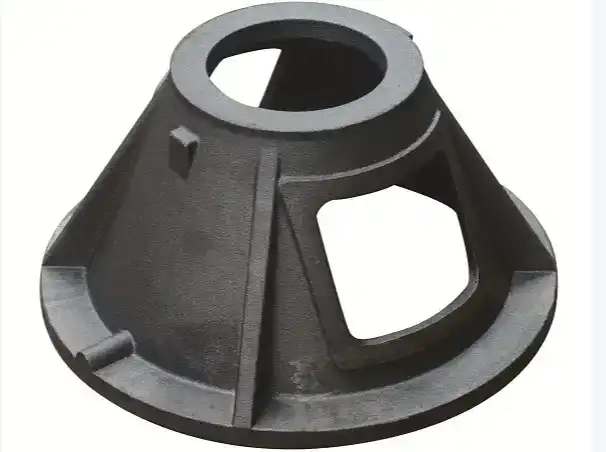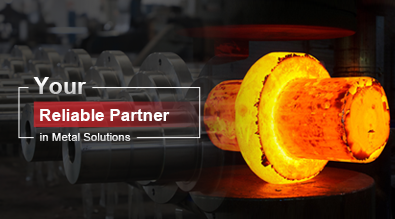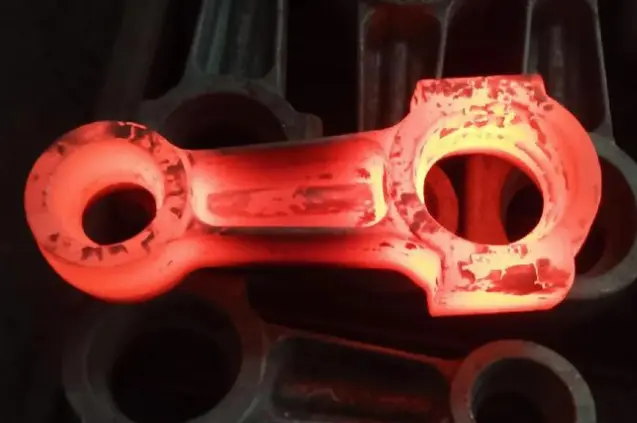What are the two types of sand casting
Sand casting is a versatile and widely used manufacturing process that has been employed for centuries to create metal components of various shapes and sizes. This method involves pouring molten metal into a sand mold, which is then allowed to cool and solidify. The sand mold is typically made from a mixture of sand, clay, and other additives that provide the necessary strength and stability to withstand the high temperatures of molten metal. Sand casting is particularly useful for producing complex shapes that would be difficult or impossible to achieve with other manufacturing techniques. In the realm of sand casting, there are two primary types that dominate the industry: green sand casting and dry sand casting. Each of these methods has its own unique characteristics, advantages, and applications, making them suitable for different manufacturing needs. Understanding the differences between these two types of sand casting is crucial for engineers, manufacturers, and anyone involved in the production of metal components.

What are the key differences between green sand casting and dry sand casting?
Composition of the sand mold
The composition of the sand mold is a fundamental difference between green sand casting and dry sand casting. In green sand casting, the mold is composed of a mixture of silica sand, clay, water, and other additives. This mixture is referred to as "green" because it contains moisture, which gives it a damp, pliable consistency. The presence of moisture in the sand allows for better compaction and molding of intricate shapes. On the other hand, dry sand casting uses a sand mixture that does not contain moisture. Instead, the sand is bonded together using organic or inorganic binders, such as resins or sodium silicate. These binders provide strength and stability to the mold without the need for moisture. The absence of water in dry sand casting allows for higher temperature resistance and improved dimensional accuracy in the final cast product.
Mold preparation process
The mold preparation process differs significantly between green sand casting and dry sand casting. In green sand casting, the sand mixture is compacted around a pattern to create the mold cavity. This process is typically done using mechanical or pneumatic compaction methods. The mold can be used immediately after compaction, as the moisture content allows it to maintain its shape. For dry sand casting, the mold preparation involves mixing the sand with binders and then packing it around the pattern. After the initial shaping, the mold is typically baked or cured to set the binders and increase the mold's strength. This curing process can take several hours, depending on the size and complexity of the mold. The additional time required for curing is one of the main drawbacks of dry sand casting compared to green sand casting.
Casting properties and applications
The properties of the final cast product and the suitable applications vary between green sand casting and dry sand casting. Green sand casting is known for its versatility and is widely used for producing a range of metal components, from small automotive parts to large machinery components. It is particularly well-suited for high-volume production due to its relatively low cost and quick mold preparation time. However, green sand casting may have limitations in terms of surface finish and dimensional accuracy for very complex shapes. Dry sand casting, on the other hand, offers superior surface finish and dimensional accuracy, making it ideal for producing intricate parts with tight tolerances. It is often used for casting larger components or those requiring a high degree of detail. Dry sand casting is also preferred for materials that react with moisture, as the absence of water in the mold reduces the risk of defects caused by gas formation during casting.
How does the solidification process differ in green sand and dry sand casting?
Heat transfer characteristics
The heat transfer characteristics during the solidification process differ significantly between green sand and dry sand casting. In green sand casting, the moisture content in the sand mold plays a crucial role in heat dissipation. As the molten metal is poured into the mold, the water in the sand begins to evaporate, creating a thin layer of steam between the metal and the sand. This steam layer acts as an insulator, slowing down the rate of heat transfer from the metal to the mold. Consequently, green sand casting typically results in a slower cooling rate, which can be beneficial for certain materials that are prone to cracking or distortion during rapid cooling. In contrast, dry sand casting exhibits different heat transfer characteristics due to the absence of moisture. The heat transfer in dry sand molds is primarily through conduction, resulting in a faster cooling rate compared to green sand casting. This faster cooling can lead to finer grain structures in the cast product, potentially improving its mechanical properties.
Mold stability during solidification
The stability of the mold during the solidification process is another key difference between green sand and dry sand casting. In green sand casting, the moisture content in the sand helps maintain the mold's shape and integrity as the metal solidifies. However, the evaporation of water can sometimes lead to mold erosion or surface defects if not properly controlled. Additionally, the gas generated during the evaporation process needs to be vented effectively to prevent defects in the cast product. Dry sand casting, on the other hand, offers greater mold stability during solidification. The absence of moisture and the use of binders result in a more rigid mold structure that is less prone to erosion or deformation during the casting process. This increased stability allows for better control over the final dimensions and surface quality of the cast product, especially for complex shapes or large components.
Cooling rate control and microstructure formation
The ability to control the cooling rate and influence the microstructure formation differs between green sand and dry sand casting. In green sand casting, the insulating effect of the steam layer provides some degree of natural cooling rate control. This can be advantageous for materials that benefit from slower cooling, as it allows for more uniform solidification and reduced internal stresses. However, precise control of the cooling rate can be challenging in green sand casting due to variations in moisture content and mold compaction. Dry sand casting offers more opportunities for controlling the cooling rate through the use of chills, insulating sleeves, or other cooling control methods. The absence of moisture allows for more predictable heat transfer, enabling manufacturers to tailor the cooling process to achieve specific microstructures or properties in the cast product. This level of control is particularly beneficial when casting alloys that require careful management of solidification rates to achieve optimal mechanical properties.
What are the environmental considerations for green sand and dry sand casting?
Waste management and recycling
Waste management and recycling practices differ significantly between green sand and dry sand casting processes. Green sand casting has an advantage in terms of recyclability, as the sand can be easily reclaimed and reused multiple times. After casting, the sand is typically screened to remove any large particles or impurities, and then mixed with fresh sand and additives to maintain the desired properties. This recycling process helps reduce waste and lowers the overall environmental impact of green sand casting. However, over time, the accumulated burnt sand and other contaminants may require disposal or more extensive treatment. In contrast, dry sand casting presents more challenges in terms of recycling. The binders used in dry sand molds often make it more difficult to reclaim the sand effectively. Some binders can be thermally reclaimed, but this process requires additional energy and may not be as efficient as green sand recycling. As a result, dry sand casting may generate more waste sand that needs to be disposed of or find alternative uses, such as in construction materials or landscaping applications.
Energy consumption and emissions
Energy consumption and emissions are important environmental considerations for both green sand and dry sand casting. Green sand casting generally has lower energy requirements compared to dry sand casting. The mold preparation process for green sand casting is relatively simple and does not require additional heating or curing steps. This results in lower energy consumption and reduced greenhouse gas emissions associated with the mold-making process. However, the moisture content in green sand molds can lead to increased gas generation during casting, which may require more robust ventilation systems. Dry sand casting, on the other hand, typically has higher energy requirements due to the need for baking or curing the molds. The curing process can consume significant amounts of energy, especially for large molds or high-volume production. However, dry sand casting may offer advantages in terms of reduced emissions during the actual casting process, as there is less gas generation from moisture evaporation. The choice between green sand and dry sand casting in terms of environmental impact often depends on the specific production requirements, scale of operation, and available energy sources.
Health and safety considerations
Health and safety considerations are crucial aspects of both green sand and dry sand casting processes. Green sand casting presents some unique challenges related to moisture content and airborne particulates. The presence of moisture in the sand can create a more humid working environment, which may require additional ventilation and climate control measures to ensure worker comfort and prevent mold growth. Additionally, the handling and mixing of green sand can generate dust particles, which may pose respiratory risks if proper personal protective equipment (PPE) is not used. Dry sand casting, while eliminating moisture-related issues, introduces concerns related to chemical exposure from binders and curing agents. Some binders used in dry sand casting may emit volatile organic compounds (VOCs) or other potentially harmful substances during the curing process. This necessitates proper ventilation systems and worker protection measures. Both green sand and dry sand casting require careful attention to safety protocols, particularly when handling molten metal and operating heavy machinery. Proper training, PPE, and adherence to safety guidelines are essential for minimizing risks in both casting processes.
Conclusion
Green sand casting and dry sand casting are two fundamental types of sand casting processes, each with its own unique characteristics and applications. Green sand casting offers versatility, cost-effectiveness, and ease of recycling, making it suitable for high-volume production of a wide range of components. Dry sand casting, while more energy-intensive and challenging to recycle, provides superior dimensional accuracy and surface finish, making it ideal for complex or large parts. Both methods have their environmental considerations, from waste management to energy consumption and worker safety. The choice between green sand and dry sand casting depends on factors such as production volume, part complexity, material properties, and environmental constraints. Understanding these differences allows manufacturers to select the most appropriate casting method for their specific needs, balancing performance, cost, and environmental impact.
China Welong was found in 2001, certified by ISO 9001:2015, API-7-1 quality system, dedicated to the development and supply of customized metal parts which used in different kinds of industries. Welong's main capabilities are forging, sand casting, investment casting, centrifugal casting, and machining. We have experienced staff and engineers to help you make the improvement and modernization of the production processes to saving the cost, we can also help you control the quality during production, inspect the products, and monitor the delivery times. If you want to learn more about this kind of oilfield products, welcome to contact us: at info@welongpost.com.
References
1. Brown, J. R. (2000). Foseco Ferrous Foundryman's Handbook. Butterworth-Heinemann.
2. Beeley, P. (2001). Foundry Technology. Butterworth-Heinemann.
3. Campbell, J. (2011). Complete Casting Handbook: Metal Casting Processes, Metallurgy, Techniques and Design. Butterworth-Heinemann.
4. Groover, M. P. (2010). Fundamentals of Modern Manufacturing: Materials, Processes, and Systems. John Wiley & Sons.
5. American Foundry Society. (2015). Mold & Core Test Handbook. AFS.
6. Schey, J. A. (2000). Introduction to Manufacturing Processes. McGraw-Hill.

Share your inquiry, get the quotation accordingly!

China WELONG- Your Reliable Partner in Metal Solutions

